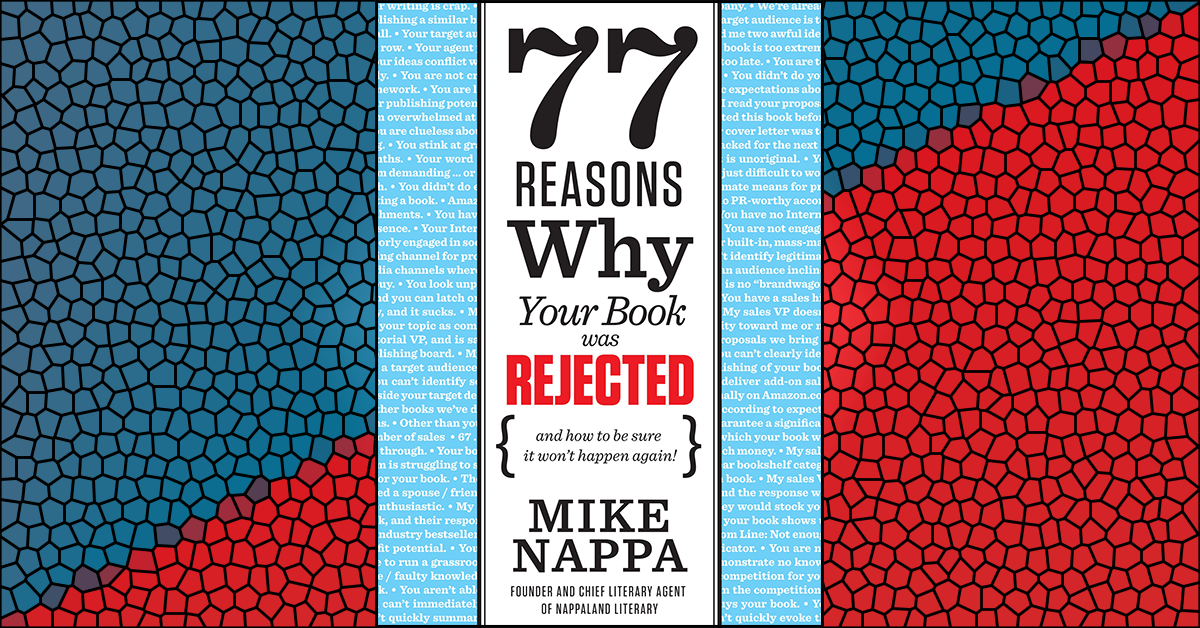An Editorial Team reason for rejection
Honestly, this reason for rejection isn’t bad for you. It just means you were a little slow getting to market. I’ve been on both sides of this equation—as an author and as an editor—and I can tell you this:
Hey, it happens. Get over it.
Not long ago I was pitching a book for one of my authors that was drawn from an academic study he’d done about what families experience at church. It was a great book, solidly based in relevant research, written by a bestselling and award-winning author, and—despite its academic pedigree—was easily readable and relatable. I figured I’d have no trouble selling this book, and so I started pitching it with enthusiasm to editors.
The first editor responded quickly, within a week. They were already planning a book on a similar topic. Rejection #1 for our book. A second editor responded just a few days later with the same message. Then a third. Pretty soon it became clear that we were behind the curve on this topic, and despite all our book had going for it, about a half dozen publishers had already gone ahead with plans for a different book that addressed the same issues as ours did.
Now, eventually I was able to connect with a few publishers who hadn’t yet moved that direction with their publishing list and, in the end, we had two offers to choose from. But for awhile there, I have to be honest and say it looked like we might get left out in the cold.
Was it because our proposal was inherently weak or un-saleable? Nope. It was all a matter of timing—and we hadn’t timed our proposal right.
That might be your experience as well. You may have a great book with great market potential, but if someone has already beat you to it at a particular publishing house, you’ll just have to take your rejection and move on to the next place.
Hey, it happens. Get over it.
What You Can Do About It
1. Consider this kind of rejection good news—and act accordingly.
If one publishing house is already planning a book similar to yours, that means you’ve correctly identified a publishing trend. Way to go, you!
Sure, you’re a little late to capitalize on that trend with this particular publisher, but chances are good that there’s another publisher out there who hasn’t moved as quickly on the trend. So, armed with the knowledge that you are in the forefront of an upcoming movement, you can begin doing deeper market analysis to find a competing publisher to sell on your idea. Who knows, your book might end up outselling the one the first publisher signed ahead of yours.
Ah, poetic justice is sweet, isn’t it?
2. Write something new and submit it to the same editor.
If an editor tells you that the reason for rejection is quality, or marketability, or the fact that your momma dresses you funny, well you’ve already made the wrong impression.
However, if the editor tells you that the only reason she’s rejecting your book is because she’s already got one like it in the works, that means: a) you and this editor think alike, and b) she probably liked your writing—or was at least willing to give your writing a good, hard look.
Hm. An editor thinks like you, and she likes your writing. That sounds like a formula for optimism, despite the current rejection. So determine to take advantage of that.
Get back to your desk. Study the other categories this editor likes to publish in, and create an all-new proposal that’ll appeal to that editor’s interests. Polish it, and send it off within the next 1-3 months (long enough so you don’t seem desperate, but short enough so she’ll still recognize your name). Based on the last rejection, chances are good the editor will give this new book a closer look than a typical one that comes in through the slush pile. That may be all you need to get your foot in the door.
How do I know this? Because it’s a tactic that’s been used on me more than once. And it has worked at least 50% of the time.
3. Do some trend forecasting.
If it really is too late to publish the book you’ve got—if too many publishers are already planning to release a similar book, then maybe it’s time to assess the current and upcoming trends in publishing.
Go ahead and take a break from writing and begin searching for data that’ll reveal future trends. Check out the last 12 months of bestseller lists. Look for current publishing stats and reports (I like to visit Bowker.com from time to time to see what they’ve got there). See what’s in the planning stages for movie releases and upcoming TV offerings. Look at the online catalogs of your target publishers and check out their “New and Upcoming Releases” tabs.
Bring all this info into your creative mind, and sift through it to uncover what you see are trends that appear. Then use that insider info to help you shape and pitch your next book—before someone else beats you to the editor.
Looking for more? Check out these links:








